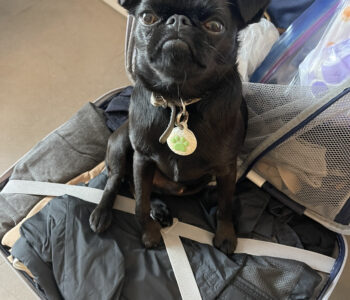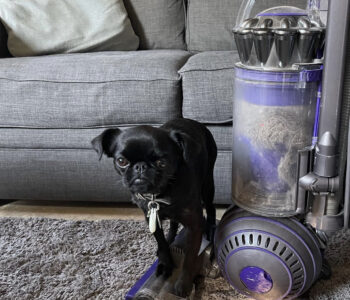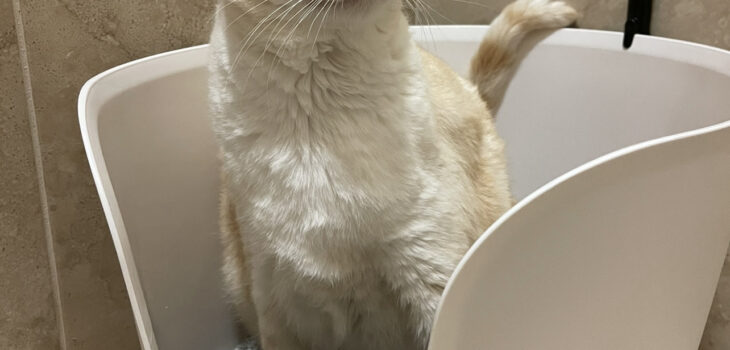 Blog
Blog
The Scoop on Kitty Potty Problems
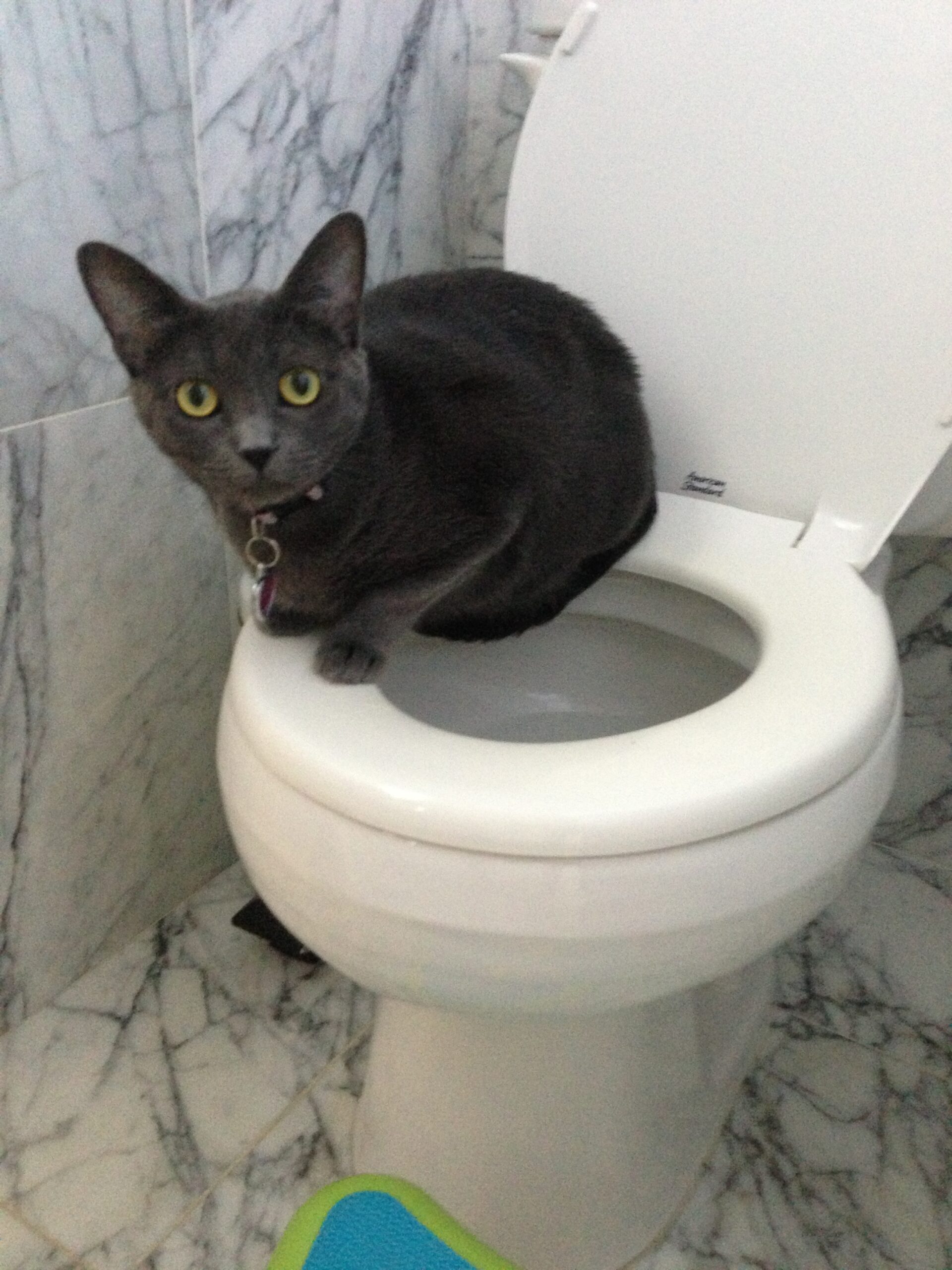 It can be very upsetting when your cat urinates outside their litter box. Feline inappropriate elimination (FIE), or house soiling, can be a challenging problem to solve, leaving many feeling overwhelmed. In fact, FIE is one the main behavioral reasons why people relinquish their cats to shelters. By becoming familiar with FIE, you can hopefully prevent it from developing or know how to curtail it.
It can be very upsetting when your cat urinates outside their litter box. Feline inappropriate elimination (FIE), or house soiling, can be a challenging problem to solve, leaving many feeling overwhelmed. In fact, FIE is one the main behavioral reasons why people relinquish their cats to shelters. By becoming familiar with FIE, you can hopefully prevent it from developing or know how to curtail it.
Before treating FIE as a behavioral problem, medical causes need to be excluded. Inappropriate urination can be due to kidney or bladder infections, diabetes, kidney failure, bladder or kidney stones, or even cancer of the genitourinary system. FIE may be the presenting symptom for a disease in an otherwise healthy cat. Make sure your veterinarian excludes medical causes before you accuse your cat of bad behavior!
Marking their territory
Many cats urinate outside the litter box because of their instincts. In the wild, cats mark the boundaries of their territory to keep others away. Not surprisingly, domestic cats have kept this behavior. In particular, unneutered male cats are more likely to mark or “spray” outside of the litter box. Often neutering can prevent or correct this behavior, especially when done at 6 months of age or younger. Sometimes, even neutered male cats or female cats can become territorial. If multiple cats are sharing one litter box, cats will often “claim” the litter box by marking it. Make sure you have multiple litter boxes in different locations to help prevent this behavior and consider using feline pheromones to “calm” territorial disputes.
Location
Like in real estate, it’s all about location, location, location. Cats, like us, need privacy when using the bathroom. Placing the litter box in a high traffic or noisy location will deter many cats from using it. Be sure to place the litter box in a quiet location where your cat will not be disturbed, otherwise it may fear the litter box. Also, make sure the litter box is easily accessible. Older cats with arthritis may have trouble climbing stairs so place the litter box close to where they spend most of their time.
Preferences
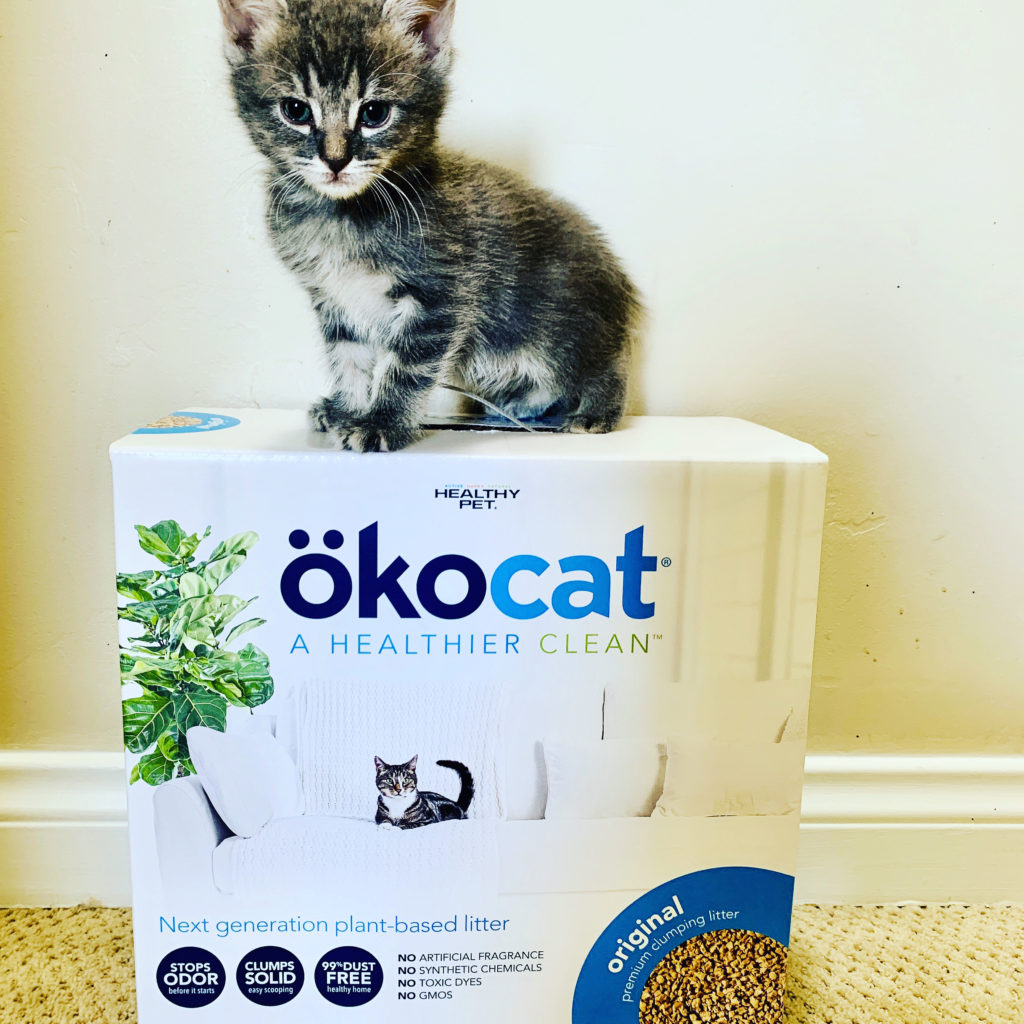 Most people know cats can be picky: they are picky eaters, they are picky about whom they like and they are picky about when they want to be loved. It should not be surprising that they can also be picky about litter or their litter box. Fortunately, my favorite cat litter ökocat makes different formulations to suit your cat’s fancy. “Original premium” has a natural texture and scent, “super soft” has a soft texture similar to clay, “less mess” has small pellets that are less likely to stick to your cats’ fur, “featherweight” has a soft texture and is their lightest litter, and “dust free” is a non-clumping paper pellet that is ideal for cats with respiratory issues or after surgery. If you change litters, make sure you change the litter gradually.
Most people know cats can be picky: they are picky eaters, they are picky about whom they like and they are picky about when they want to be loved. It should not be surprising that they can also be picky about litter or their litter box. Fortunately, my favorite cat litter ökocat makes different formulations to suit your cat’s fancy. “Original premium” has a natural texture and scent, “super soft” has a soft texture similar to clay, “less mess” has small pellets that are less likely to stick to your cats’ fur, “featherweight” has a soft texture and is their lightest litter, and “dust free” is a non-clumping paper pellet that is ideal for cats with respiratory issues or after surgery. If you change litters, make sure you change the litter gradually.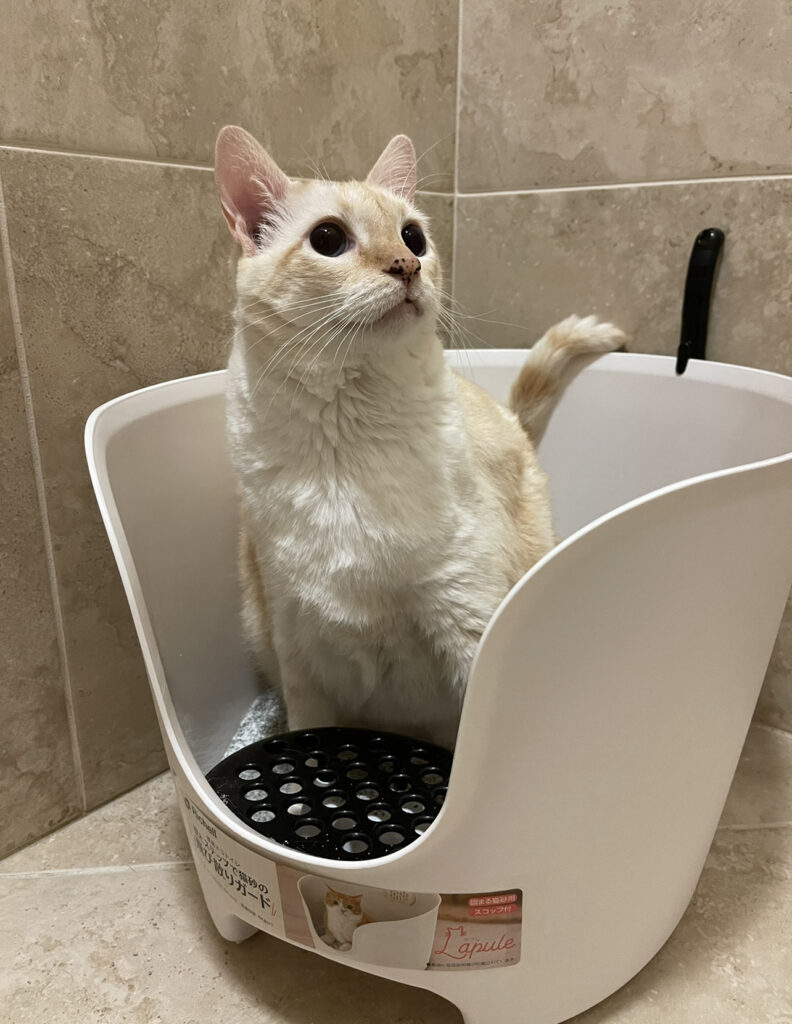
Cats can also be picky about their litter boxes. Some cats prefer open litter boxes, while others like the privacy of a covered litter box. Having had cats my entire life and now having three very different cats, each with their own preferences, I wanted to share some of my cat’s favorite litter boxes. Not surprisingly, my big cat Smee prefers a box with a large opening and does not like enclosed litter boxes. Richell’s High Wall Cat Litter Box works great for him because it provides privacy and helps keep litter inside the box while still having an open top so it isn’t totally enclosed. My smallest and most mischievous cat Elf is a fan of the Meowy Studio Loo. 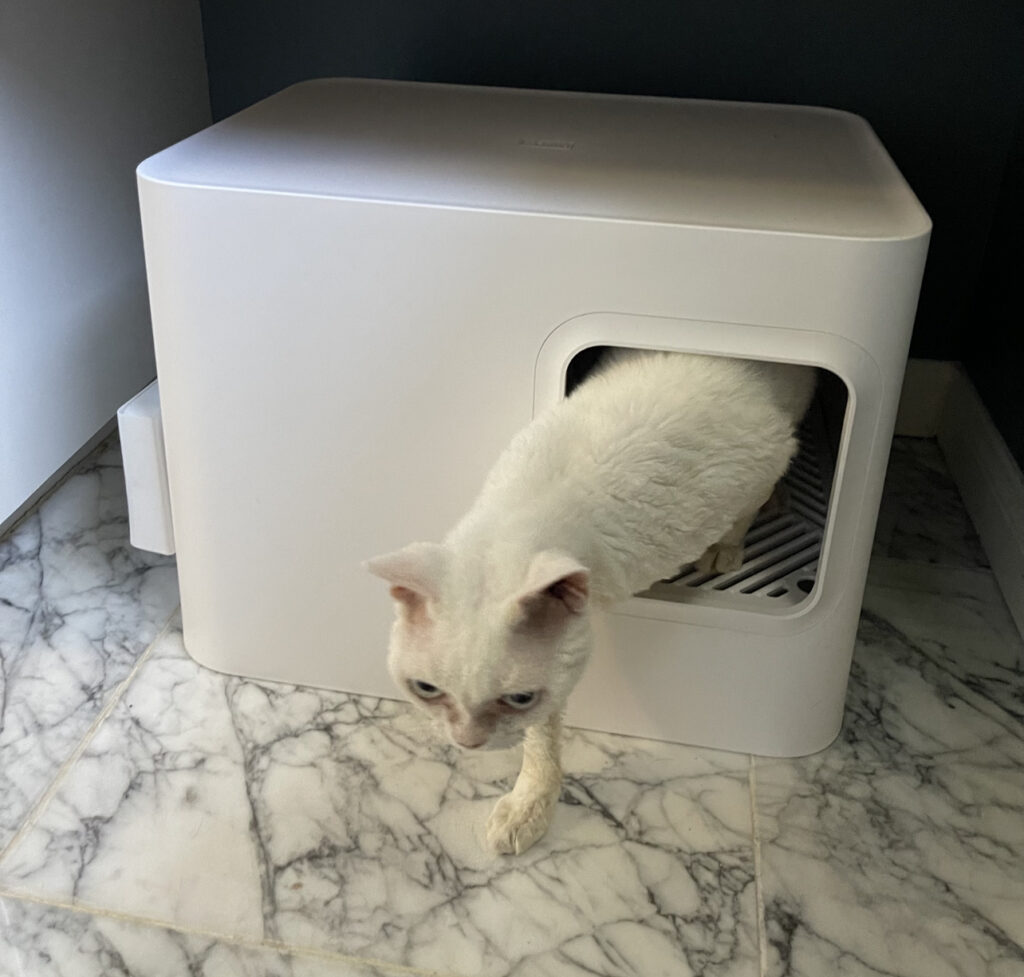 Cats enter the small doorway onto a filter plate that catches litter and leads them into the litter box area. It is private which Elf seems to like and has a simple sleek design which I like. Starlite, my sole female cat, loves the NewAge Pet LitterLoo Bench Litter Box. It is spacious and allows you to fit just about any litter box inside it (even an automatic litter box), while having enough room to store litter. It looks amazing and doubles as an end table. All my cats love to sit on it; my husband and I love that it looks like furniture and no one can tell it’s a cat litter box. As you can see I have an assortment of litter boxes in my home, but that’s because each of my cats is a unique individual. If you are having trouble with feline inappropriate elimination, be sure to try different litter box styles such as covered, uncovered, and automatic.
Cats enter the small doorway onto a filter plate that catches litter and leads them into the litter box area. It is private which Elf seems to like and has a simple sleek design which I like. Starlite, my sole female cat, loves the NewAge Pet LitterLoo Bench Litter Box. It is spacious and allows you to fit just about any litter box inside it (even an automatic litter box), while having enough room to store litter. It looks amazing and doubles as an end table. All my cats love to sit on it; my husband and I love that it looks like furniture and no one can tell it’s a cat litter box. As you can see I have an assortment of litter boxes in my home, but that’s because each of my cats is a unique individual. If you are having trouble with feline inappropriate elimination, be sure to try different litter box styles such as covered, uncovered, and automatic. 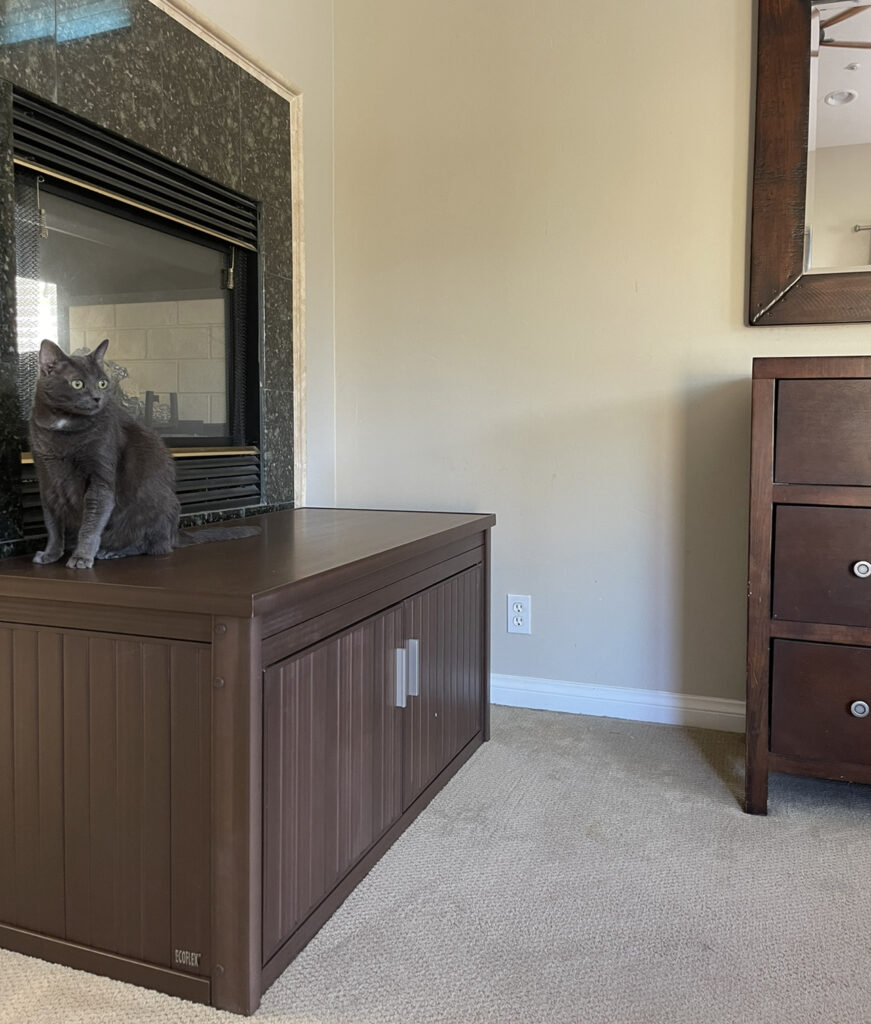 Remember one size does not fit all. Make sure the litter box is big enough. Large cats may be too big for some of the smaller litter boxes. The goal is to find out what type of litter box your cat prefers. If you have multiple cats like me that may mean having several different types of litter boxes.
Remember one size does not fit all. Make sure the litter box is big enough. Large cats may be too big for some of the smaller litter boxes. The goal is to find out what type of litter box your cat prefers. If you have multiple cats like me that may mean having several different types of litter boxes.
Accessibility
As cats get older, arthritis becomes more common. Arthritis is a progressive, painful joint disease that limits mobility. Arthritic cats may have trouble getting in and out of traditional litter boxes and end-up going outside of the litter box. This problem can be resolved by using “low profile” litter boxes or boxes with a ramp. Likewise choose a soft that will be easier on an arthritic cat’s joints.
Dirty litter boxes
Cats are very clean animals. They meticulously groom themselves. It should be no surprise that they prefer clean litter boxes. The presence of waste and the smell of ammonia in a dirty litter box can deter a cat from using it and force them to go elsewhere. Keeping the litter box clean is a chore that is often neglected. However, keeping the litter box clean is often the only way to cure inappropriate urination. If you can’t scoop daily, consider an automatic self-cleaning litter box or try teaching your kitty to use the toilet (yes, it is possible with training and patience, but don’t expect them to flush).
Solving FIE
By knowing the causes of FIE, you can hopefully prevent it from developing. Since bad habits are hard to break, it is easier to prevent a behavioral problem than to treat one. But what do you do if your cat already house soils?
First, rule out medical causes. Once they have been excluded, the approach to correcting FIE can be divided into 3 steps: cleaning up the accident, preventing future accidents, and making the litter box more inviting.
1. All accidents must be cleaned up completely. Use cleaning products that completely remove or neutralize the urine smell. Cat’s sense of smell is 14x more sensitive than ours. If a cat can still smell the scent of urine, they will be drawn there and will continue to soil in that location.
2. In order to prevent future accidents, make the location less attractive. Use products to deter cats from house soiling such as scat mats, double-sided sticky tape, crinkly runners, aluminum foil, and noise canisters. By making the site of the crime unappealing, it will encourage your cat to choose a more appropriate location (i.e. the litter box).
3. Finally, make the litter box more inviting. The most important step is to keep it clean. Also choose litter and a litter box that caters to your cat’s preferences. Make sure you provide enough litter boxes for everyone (the rule of thumb is one litter box for cat plus one). Finally, feline pheromones can help with territorial issues.
FIE can be a frustrating problem. By knowing the most common behavioral causes of this problem, you can help prevent it from developing or treat a pre-existing problem. If these problems persist, ask your veterinarian for a referral to a veterinary behaviorist.


